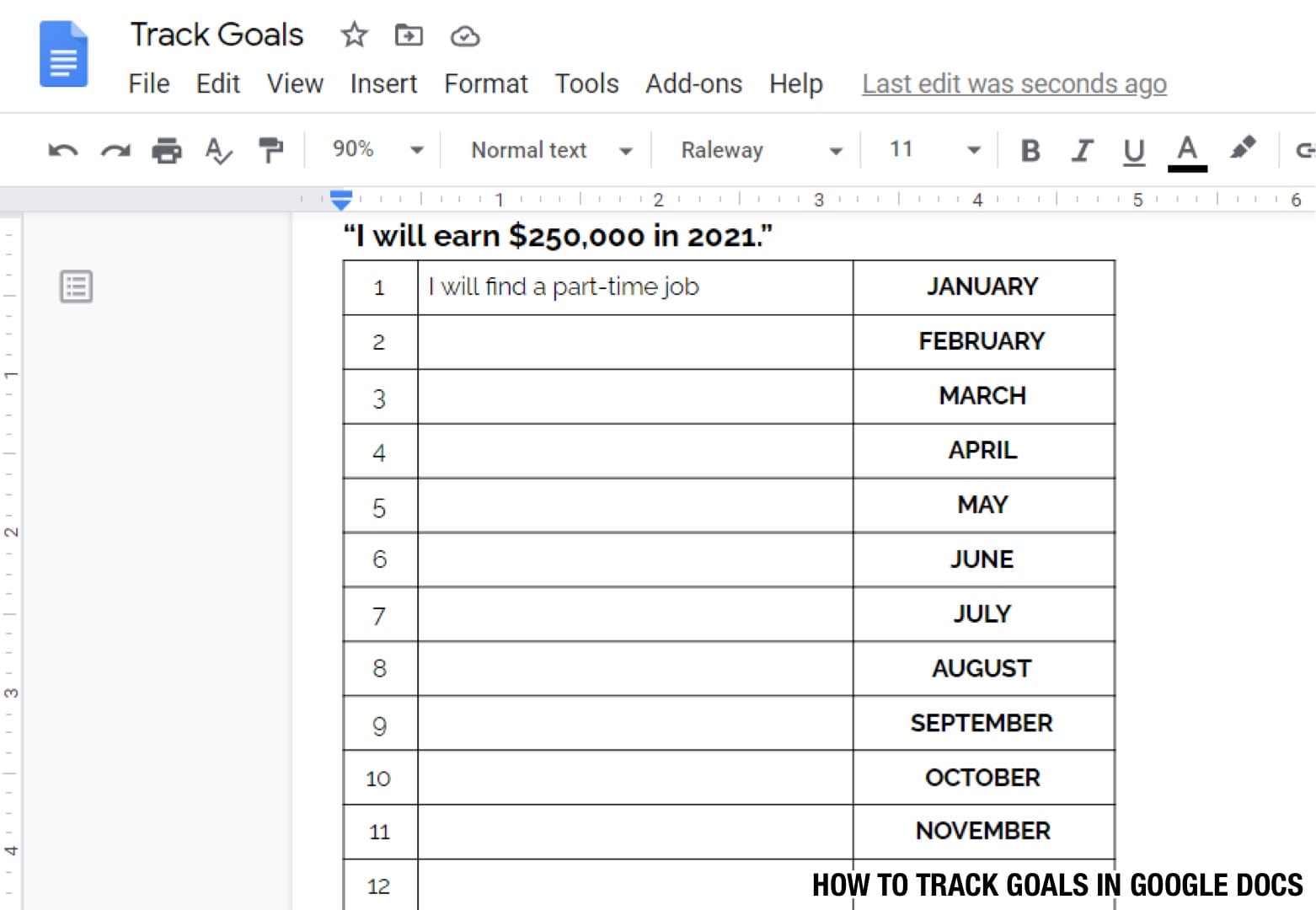Why Is Goal Setting Important?
Imagine if Nick Saban, the head coach of the Alabama Crimson Tide football team, didn’t have a goal. Imagine if he just showed up at work every day, did his job, and went home.
Sounds silly, right? We know that he has clear and specific goals—mainly to win the national championship.
We know that world-class performers in sports have goals. We know that goals provide clarity of action as well as motivation to consistently do the hard things required to achieve world-class status.
Why not you?
It’s the same in your life… your career, your relationships, and your health.
Imagine digging a hole—a big, deep hole in the ground that takes you a year to dig. You show up every day, grab a shovel, and just start digging. Then, imagine that when you finally dig the hole deep enough, you learn that you’ve dug it in the wrong spot.
That’s what you’re doing if you don’t have clear goals for your life. You wake up every day and do your own version of digging a hole. Your alarm clock goes off, you wake up and head off to work where you spend the day digging your hole. You come home, have dinner, and get ready to do the whole thing all over again tomorrow.
You’re already working hard every day. You’re already busy. You should have a target so that the work that you do has a purpose behind it.
Ok. You get it. You know you have to set goals. This is when people ask about…
Listen to the podcast version of this blog post:
How to Set the Right Kinds of Goals

You’re thinking, “Ok, so I have to set goals. But what are the right goals for me? How do I figure out what kinds of goals I should set?”
First, you must start with what’s important to you. In my personal performance coaching practice, we start by identifying and crystallizing core values. When you discover your core values, you stop setting goals based on what’s parked in your neighbor’s driveway, what social media tells you that you should want, or what the mass media forces upon you, and you start setting goals that are in alignment with what you truly want.
Here are the different kinds of goals you should set (the different categories of goals):
Relationship Goals: Relationship Goals are goals for your personal relationships including family, friends, and even God.
Relationship Goal Example 1: I will attend church every Sunday for one year.
Relationship Goal Example 2: I will set a date night at least once a month with my wife and plan two overnights without the kids this year.
Self Goals: Self Goals are around growth, impact, or fun (think: GIF). Growth may be a new skill set you want to learn. Impact might be volunteering or philanthropy. Fun would simply be things that are fun for you. For me that includes things like camping or mountain biking.
Self Goal Example 1: I will complete a course on personal finance.
Self Goal Example 2: I will plan a weekend canoe trip with my old college buddies to take place this summer.
Health Goals: Health Goals are goals around health and wellness. This can be physical health like losing weight or running a marathon, or mental health and well-being.
Health Goal Example 1: I will run a marathon in the fall.
Health Goal Example 2: I will attend a yoga class at least once per week.
Wealth/Work Goals: Wealth Goals include work goals. These are goals for your career and financial situation. This might include getting a raise, getting promoted, starting a business, or saving a certain amount of money each month.
Wealth/Work Goal Example 1: I will make $150,00 in base + commission salary in 2021.
Wealth/Work Goal Example 2: I will start a college savings account for my children this year and save $5,000.
Next, people ask, “How do you set goals properly?” First, there are two types of goals: Process goals and outcome goals.
What’s the Difference Between Process Goals vs Outcome Goals?
The best way to explain the difference between process goals and outcome goals is to simply give you examples.
PROCESS GOAL EXAMPLE: “I will workout 4x per week.”
OUTCOME GOAL EXAMPLE: “I will lose 20 lbs.”
Both may get you to the same result but one focuses on the process (working out 4x per week) and the other focuses on the outcome (losing 20 lbs.). Neither is right nor wrong. Either is correct. It’s your personal preference.
Sometimes a process goal will feel more appropriate. Other times, an outcome goal will feel more appropriate.
Here’s another example of process vs outcome goals:
PROCESS GOAL EXAMPLE: “I will average 40 sales calls and 10 in-person visits per week.”
OUTCOME GOAL EXAMPLE: “I will earn $250,000 in 2021.”
Again, both may get you to the same result of increasing your salary but one focuses on the process (making 40 sales calls and 10 in-person visits per week) while the other on the outcome (earning $250,000 in 2021).
What else do you need to know about how to set goals properly?
You should know about “SMART goals.”
What are S.M.A.R.T. Goals?
SMART is an acronym for:
-
- Specific
- Measurable
- Attainable
- Relevant
- Time-bound
On the first go-around, my personal performance coaching and executive life coaching clients often get this wrong. They set vague goals.
For example, they’ll say things like…
“I want to improve my relationship with my wife”
“I want to get fit”
“I want to make more money”
These are not SMART goals.
Here’s how to take these same goals and make them SMART goals. Let’s focus on “specific” and “measurable.”
VAGUE GOAL: “I want to improve my relationship with my wife.”
SMART GOAL: “I will set a date night each month and plan two overnights this year without the kids.”
VAGUE GOAL: “I want to get fit.”
SMART GOAL: “I will lose 20 lbs. by Christmas.”
VAGUE GOAL: “I want to make more money.”
SMART GOAL: “I will earn $250,000 in 2021.
What about “attainable?”
UNATTAINABLE: “I want to run a marathon in 30 days.”
ATTAINABLE: “I will run a marathon in 9 months.”
What about “relevant?”
Above in the section titled, “How to set the right kinds of goals,” I talk about identifying your core values. When you do this, you must then associate one or more core values to each goal. The result is goals that align with your values and not, as I mentioned, goals based on what’s parked in your neighbor’s driveway, what social media tells you that you should want, or what the mass media forces upon you.
What about “time-bound?” This is about deadlines.
What is the purpose of setting a deadline for a goal?
Setting a deadline allows you to have a target to focus on. For example, if you want to start a business but don’t have a deadline, you’ll always want to start a business. If you create a deadline for your goal of starting a business, research shows that you’re more likely to take action.
The deadline for your goal should not be “next week.” That’s simply a task that belongs on your to-do list. The deadline for your goal should be a minimum of 6 months and should be a specific date. My personal performance coaching and executive life coaching clients get the best results with goals they have deadlines that are 6-18 months out.
Because these bigger goals take time, you can’t just go achieve a goal tomorrow. You have to have a plan to break it into actionable steps.
So, let’s talk about taking action on your goals. First, let’s break it into bite-sized pieces.
How to achieve goals once they are set
This is where most people get stuck. Most people won’t even set goals because they know that they don’t have a process to follow through on goals. You have to have a method for breaking goals into tasks or smaller steps and a system for tracking goals.
Let’s talk about both. First, how to break goals into tasks and small steps.
How to break goals into tasks and small steps
You break goals into smaller, more achievable steps by using something called a micro-goal. A micro-goal is a smaller goal that is a step on the path to achieving the larger goal.
For example, let’s say it’s January 1st and your goal is to run a marathon in September. Your micro-goals for January might be to:
-
- Buy a pair of running shoes.
- Find a local running group.
- Research marathon training plans.
That explains how to break your goals into tasks or smaller steps, but what about how to track your goals?
How do I track goals?
Setting goals is worthless if you don’t track them. For the few people who take the time to set goals, a majority don’t track them simply because they don’t know how to track goals.
Here are three ways to track goals:
-
- How to track goals in Excel or Google Sheets:
- Add one goal to a spreadsheet.
- Leave 12 blank rows beneath your goal.
- List the months in the first column.
- Now, each month you will write your new micro-goals (see “How to break goals into tasks and small steps)”
- Repeat this process each month.
- How to track goals in Excel or Google Sheets:

-
- How to track goals in Word or Google Docs: You can do the same as above only using a table. Alternately, you could simply use a bullet-pointed list for each month and micro goal.

- How to track goals on paper:

How many goals should you have?
Depending on the research you read, you should have somewhere between 3 and 10 goals. In my experience as a personal performance coach and executive life coach, I find that 5-7 works best and that happens to fall right in between what the research suggests.
You might be thinking, how can I focus on multiple goals at once? You’re not alone so that’s what we’ll talk about next.
How to achieve multiple goals at once
I was an All American wrestler at the University of Virginia. When I was an athlete, I could afford to have a single-minded focus on my goal to become an NCAA champion. However, that’s not sustainable for me now. I have a wife and four children.
Many of my executive life coaching and personal performance coaching clients are in the same boat. Most are men and many were athletes in a past life (high school, college, professional or even weekend warriors). But now they have more stakeholders to consider in their goals. This is why you must have goals in multiple areas. And the way you do this is to simply create the goals and then use the system for how to track your goals mentioned above.
How to Overcome Obstacles in Achieving Goals
You will stumble. Guaranteed.
And it’s normal.
As the host of the popular podcast on success and failure, Success Through Failure, I’ve spoken with visionaries from #1 NYT bestselling author Tim Ferriss to world-renown leadership expert and author of the One-Minute Manager Ken Blanchard to fitness guru and P90X creator Tony Horton. All of them have failed along the path toward achieving their goals.
So, how do you overcome obstacles in achieving your goals?
Understand that failure is a necessary step on the path to success. I shared this message in my popular TEDx Talk on failure.
And you can listen to some of the top guests on the Success Through Failure podcast.
Top Guests:
Tony Horton podcast interview
Tim Ferriss podcast interview
Jon Gordon podcast interview
John Jantsch podcast interview
I also recommend that you identify the potential obstacles that might arise when working toward your goals. You can download my goal setting template PDF which includes a question on identifying obstacles that might arise.
By taking this step, you reduce the impact of any obstacles because you’ve mentally prepared for the fact that obstacles might arise.
Don’t Go It Alone
Most people get to this point and figure they have to go it alone. It’s up to them.
“If it is to be, it is up to me,” the saying goes.
That’s true. That just means, if you want to get help, it’s up to you. If your goal is to figure out how to give a TEDx Talk, then you can identify people who’ve given them and ask them how they did it. You can sign up for Toastmasters to learn how to become a better public speaker.
If you want to run a marathon, you can find a running partner. You could also talk to a local running expert who works at your local running shop.
These, by the way, are real examples of how I came to be able to give a TEDx Talk and run a marathon.
What individuals or groups can help you achieve your goal?
Success Stories
As a personal performance coach, corporate life coach, and executive life coach, I’ve worked with leaders from Fortune 500 companies, professional athletes, and entrepreneurs. Here are a few success stories from people who have followed the exact blueprint I’ve laid out in this article… these are people who paid for what I’m sharing with you here.
“I’ve seen and felt more personal change in myself in the past 10 weeks than any other period in my life.”
-John Lyons
“I can honestly say it totally changed the direction of my life. I would pay double what I did to be where I am today.”
-Eric Albright
“This has been life-changing, and it happened fast. It was almost instantaneous that things started to click.“
-Matt Thomas, entrepreneur
“Since joining RYP, we have paid off over $280,000 in debt, started a business, landed a huge promotion, are building our dream home, earning $90,000 more per year, and giving away more than 15% of our income a month! Other than my parents and my wife, no other person believes in me and influences me like Jim Harshaw. RYP is the reason I am living my best life, today!”
-Jerry Stravia
Common questions I get about goal setting:
How do you set a meaningful goal?
The easiest way to explain this is to use the analogy of sports. World-class athletes push themselves to the maximum capacity of human limits because their goal is aligned with their own core values. Want to set a meaningful goal? Let’s talk about how to discover your core values.
When should I set goals?
Goal setting is most effective when you feel you need clarity and direction. You shouldn’t wait until New Years or the end of your fiscal year at work. And since you’re reading an article on goal setting, goal setting is most effective right now! Let’s talk.
How do you set goals at work?
There are two things to consider when setting goals at work.
First, what is meaningful to you about your work? This is easy when you’re a doctor and saving lives or an educator and preparing the future of our world. For the rest of us, we must dig a little deeper. Who are you serving — be it clients, colleagues or the community? If you’re a janitor, you’re making your facility cleaner, safer, and healthier. Maybe you’re making people smile by being a positive presence in an otherwise challenging workplace?
Second, what does your boss expect? You likely have outcomes and objectives that you must hit.
Once you consider these two things, the above process for goal setting can be followed.
How do I set goals with a new hire, young employee, or even my children?
When formulating a goal-setting program with a novice goal setter, it is best to keep it simple (stupid*) and keep it winnable. Set realistic goals that are relatively easily achievable. While I typically recommend setting goals with deadlines that are a minimum of 6 months out, you may consider looking at 90-day goals or even shorter 30-day goals.
*If you didn’t get the reference there, KISS is an acronym for keep it simple stupid.
What Should You Do Next?
Want to discover what the right goals are for you? Schedule your free clarity call with personal performance coach Jim Harshaw Jr now.
You can download the goal tracking template here.




